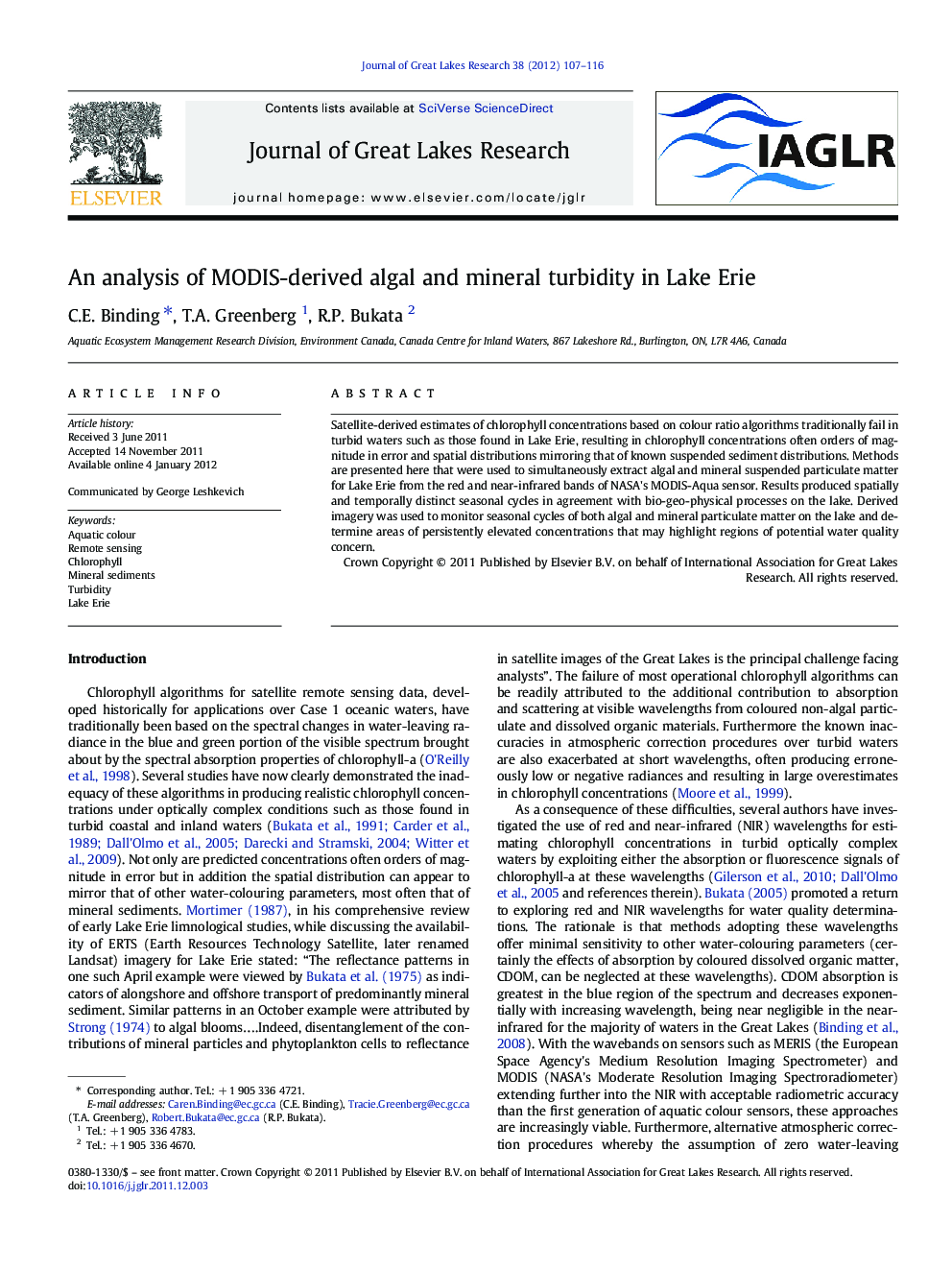| Article ID | Journal | Published Year | Pages | File Type |
|---|---|---|---|---|
| 4398602 | Journal of Great Lakes Research | 2012 | 10 Pages |
Satellite-derived estimates of chlorophyll concentrations based on colour ratio algorithms traditionally fail in turbid waters such as those found in Lake Erie, resulting in chlorophyll concentrations often orders of magnitude in error and spatial distributions mirroring that of known suspended sediment distributions. Methods are presented here that were used to simultaneously extract algal and mineral suspended particulate matter for Lake Erie from the red and near-infrared bands of NASA's MODIS-Aqua sensor. Results produced spatially and temporally distinct seasonal cycles in agreement with bio-geo-physical processes on the lake. Derived imagery was used to monitor seasonal cycles of both algal and mineral particulate matter on the lake and determine areas of persistently elevated concentrations that may highlight regions of potential water quality concern.
► Exploring red and NIR wavelengths in remote sensing of Lake Erie water quality. ► A method which effectively distinguishes algal from mineral particulates. ► Improved retrieval accuracy compared with standard operational algorithms. ► Time series analysis of lake-wide chlorophyll and mineral sediments. ► Identifying areas of potential water quality concern.
